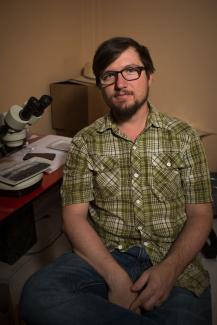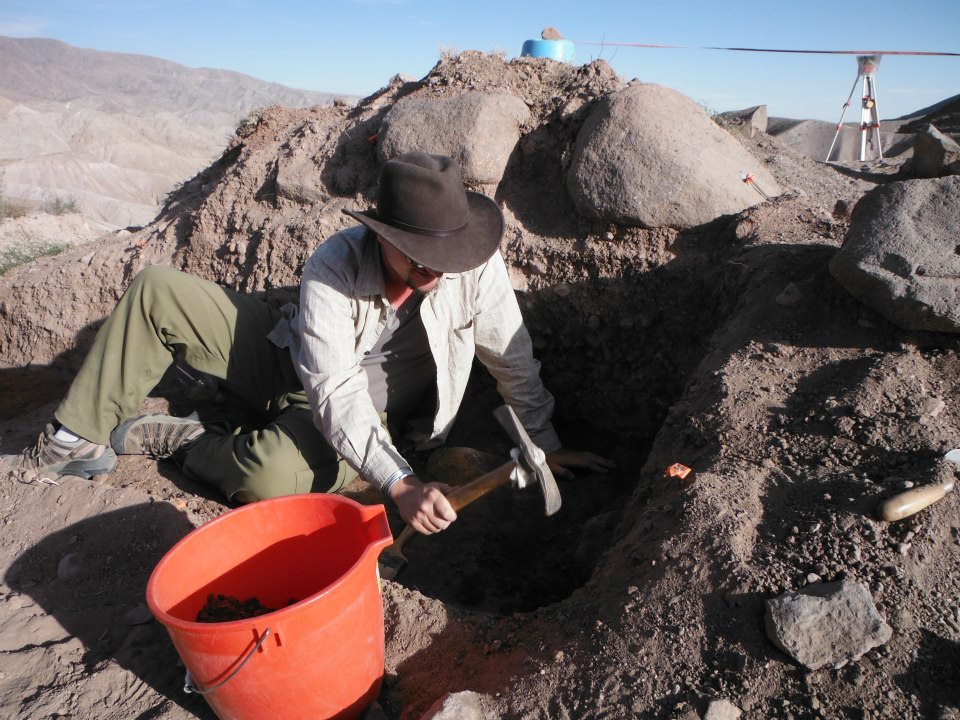
- Social Archaeology, Foodways, Culture Contact
- Paleoethnobotany, Colonial Encounters, Andean Prehistory
- Wari Empire, Subsistence Economy, Feasting
Education:
2018 Ph.D, Anthropology, University of California, Santa Barbara (expected Winter 2019)
2011 M.A., Anthropology, University of California, Santa Barbara
2009 B.A., Anthropology and History, Ripon College
Research:
I am a social archaeologist whose primary research interests include culture contact, foodways, and colonialism. I have worked on various projects in the Southeastern U.S., Mexico, Germany, and the Peruvian Andes. I use macrobotanical and microbotanical data to assess the intersection between food-related practices, agricultural production, and the construction and maintenance of identity and social life. I also have research interests in archaeological beverages. More specifically, I am interested in the Peruvian Andean practice of brewing of chicha de molle, a fermented beverage made of fruit of the Schinus molle tree, using archaeobotanical remains.
Projects:
Cerro Baul, Upper Moquegua Valley, Peru
Analysis of Food, Politics, and Colonialism on the Wari Frontier at the Site of Cerro Baul in the Upper Moquegua Valley, Peru

Matthew Biwer has been assisting Dr. Donna Nash (UNCG) with archaeological excavations and paleoethnobotanical analysis from Middle Horizon Wari sites in the Moquegua Valley, Peru since 2009. Using macrobotanical plant remains, his analysis focuses on the role food and foodways played in colonialism and the creation and maintenance of imperial identity the southern frontier of the Wari Empire (600-1000A.D.). As group identity and membership is never more important than when on the frontier, Biwer argues that food and feasting at Cerro Baul, a Wari site located atop a local spiritual entity called an apu, were an essential means for Wari leaders to reaffirm and maintain a collective Wari identity and legitimize their colonial presence so far from the heartland.
Analysis of Late Woodland Plant Remains from the Myer-Dickson Site, Central Illinois River Valley
Matthew Biwer has been engaged in the analysis of Late Woodland (500-1000A.D.) paleoethnobotanical remains from the Myer-Dickson site, located in the Central Illinois River Valley of Western Illinois. His project focuses on the cultivation of native starchy plants in the Illinois River and American Bottom regions including goosefoot (Chenopodium berlandderi), maygrass (Phalaris carolina), little barley (Hordeum pussilium), and erect knotweed (Polygonum erectum). Using macrobotanical analysis to compare Myer-Dickson to sites located in southern and west-central Illinois during the Middle to Late Woodland transition, he considers the environmental, evolutionary, and cultural selection processes that influenced the range and intensity of cultivation of these native domesticates.

Courses:
Courses Taught
Anth 162: Prehistoric Food Production (UCSB, taught 3 times)
Courses TA’d (several times each)
ANTH 2: Intro to Cultural Anthropology (UCSB)
ANTH 3: Intro to Archaeology (UCSB)
ANTH 5: Intro to Biological Anthropology (UCSB)
ANTH 121: Human Evolution (UCSB)
ANTH 131: North American Indians (UCSB)
ATY 488: Archaeological Field Methods (UNCG/UIC)
ATY 489: Archaeological Laboratory Methods (UNCG/UIC)
EARTH 7: Walking with Dinosaurs (UCSB)